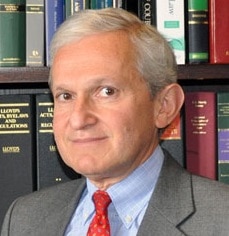
Vos: Reduced legal uncertainty
Blockchain and smart contracts were given a major boost towards becoming a standard method for securely storing and transferring cryptoassets yesterday, when the expert panel charged with giving the technology legal certainty declared they should be treated in principal as property.
The much-anticipated 56-page legal statement by the UK jurisdiction taskforce of the LawTech Delivery Panel will help reduce the legal doubt that has slowed the adoption of distributed ledger technology by international traders and could make Britain a global centre for digital property disputes.
The taskforce’s chair, Sir Geoffrey Vos, Chancellor of the High Court, said he had no doubts the technology was how business would be conducted in future.
The clarification of critical legal questions, consulted on in May, was widely welcomed by lawyers and hailed as an example of the inherent flexibility of English common law.
Last year the World Economic Forum forecast 10% of global GDP will be stored on the blockchain by 2027.
The legal statement on cryptoassets and smart contracts said it focused on “those aspects of cryptoassets and smart contracts that are potentially novel and distinctive and discuss the extent to which we consider that general legal principles apply”.
Addressing the substance of the question in hand, it said that in general “cryptoassets have all of the indicia of property”.
Their novel features, such as intangibility and the use of a distributed transaction ledger, “do not disqualify them from being property” and so in law “cryptoassets are therefore to be treated in principle as property.”
It recognised that the consequences of this for applying legal rules included “those relating to succession on death, the vesting of property in personal bankruptcy, and the rights of liquidators in corporate insolvency, as well as in cases of fraud, theft or breach of trust”.
Meanwhile, the panel judged that smart contracts could create legal relationships just as well as more traditional ones, so “a smart contract is therefore capable of having contractual force” whether the obligation was defined by computer code or established elsewhere.
English law, they concluded, was equipped to deal with all kinds of smart contracts, whether bilateral or structured around decentralised autonomous organisations (known as DAOs).
Further, the use of secure private keys could meet a requirement that contracts had to be signed. Also, anyone who had “who has acquired knowledge and control of a private key by some lawful means” would generally be considered “the owner of the associated cryptoasset”.
They could then transfer the asset and a transfer would be deemed completed once the transaction was reflected in the ledger. Even transfers properly drafted but not recorded in a transaction ledger could be “recognised and enforced”.
This was not to consider keys and cryptoassets as the same, the statement noted. While the latter should be treated in principle as property, “a private key is not in itself to be treated as property because it is information”, it said.
Some complex issues around which jurisdictions governed certain disputes would best be resolved by legislation after international cooperation, the panel suggested.
Welcoming the added certainty, one lawyer predicted that while legal practitioners would be reassured by the panel’s statement, there would still be plenty of advisory work around digital transactions in future.
“Other market participants are likely to still feel uncertainty as to how their proposed activities fit within the wider and complex legal & regulatory environment,” said Tara Waters, a fintech partner at City firm Ashurst.
Simon Davis, president of the Law Society, responded that the statement would be both appreciated by lawyers and was good for Britain.
“Clarification on the legal status of cryptoassets and smart contracts, informed by rigorous expert analysis, will be gladly received by the profession…
“Once again, this demonstrates the renowned flexibility of English common law to grow and adapt. It will increase confidence amongst law firms to adopt new technologies and among investors to invest.”
But the government could do more to invest in legal technology, Mr Davis urged.
Jennifer Craven, a senior associate at Pinsent Masons, described the statement as “ground-breaking”, adding: “This has important consequences for the application of a number of legal rules such as those relating to the vesting of property in personal bankruptcy, the rights of liquidators in corporate insolvency, and in respect of tracing and breach of trust claims, in civil fraud matters.”
It was not yet clear whether the Law Commission would carry out any legislative work, but nevertheless she hoped “that trickier and challenging legal questions have now been simplified and made easy for the asset recovery practitioner”.
In his introduction, Sir Geoffrey said: “In legal terms, cryptoassets and smart contracts undoubtedly represent the future.
“I hope that the legal statement will go a long way towards providing much needed market confidence, legal certainty and predictability in areas that are of great importance to the technological and legal communities and to the global financial services industry.
“There is no doubt that some of the matters covered by the legal statement will, in the future, be the subject of judicial decision. But my hope is that, in the meantime [it] will provide a foundation for the responsible future utilisation of cryptoassets and smart contracts…
“The objective of the legal statement is to provide the best possible answers to the critical legal questions under English law. I am sure that it will demonstrate the ability of the common law in general, and English law in particular, to respond consistently and flexibly to new commercial mechanisms.”
Other members of the UK jurisdiction taskforce were: Lawrence Akka QC (Twenty Essex), Sir Nicholas Green (chair of the Law Commission, as an observer), Richard Hay (Linklaters), Peter Hunn (Accord Project), Mary Kyle (City of London Corporation), Christopher Woolard (Financial Conduct Authority) and High Court judge Sir Antony Zacaroli.













Leave a Comment